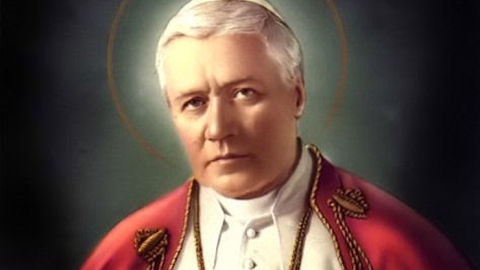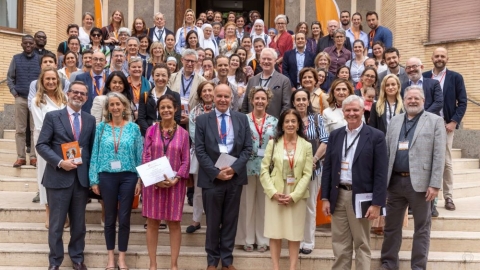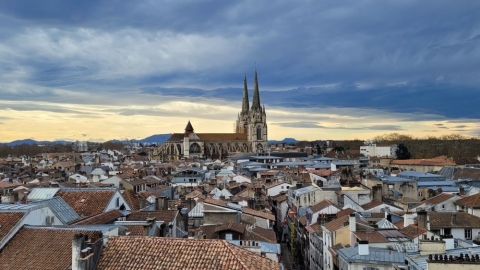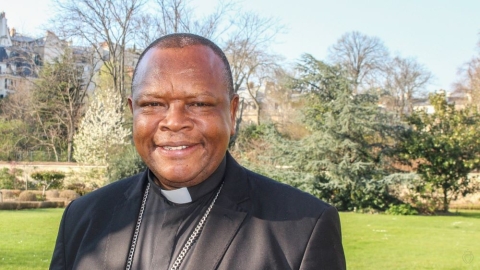Who Is Defending and Who Is Criticizing the Nine Years of Francis’ Pontificate? (1)

Fr. Mark Massa
This March 13, 2022 was the date of the ninth anniversary of the election of Pope Francis. Turning 85 last December 17, the sovereign pontiff has seen his health problems increase over the past year (cf. FSSPX.News), to the extent that Vaticanists feel they need no longer hide, but can openly discuss his succession.
In this particular climate, two facts hold must be considered: a discreet meeting organized on March 25 and 26, in the United States, by the defenders of Francis’ course; and an anonymous memorandum addressed to the cardinals at the beginning of Lent, which was very severe on the current pontificate. This meeting and this memorandum show what will be at stake in determining Francis’s successor.
On the March 30 edition of LifeSiteNews, Michel Haynes reveals that a “A select group of high-ranking U.S. prelates, along with the Papal Nuncio and Vatican curial officials, secretively gathered in Chicago recently to ‘understand the spirit of what they call the ‘opposition’’ to Pope Francis, and to promote the ideology of Vatican II.”
And added the following details: “Between March 25 and 26, as Pope Francis was praying the act of consecration of Russia and Ukraine, a conference was held at Loyola University Chicago entitled ‘Pope Francis, Vatican II, and the Way Forward.’”
“Jointly sponsored by Boston College’s Boisi Center for Religion and American Public Life, along with Loyola University Chicago’s Hank Center for the Catholic Intellectual Heritage, and Fordham’s [NY] Center on Religion and Culture, [all three are private Jesuit universities] the conference was conducted almost entirely under the media radar.”
On March 25, The Torch [newspaper written by students at St. John's University, New York] revealed that the event was an initiative of Fr. Mark Massa s.j., director of the Boisi Center, and Michael Sean Winters, editor of the National Catholic Reporter [a progressive, pro-contraception, and abortion weekly].
Fr. Massa told The Torch of the selectively invited participants, saying that in addition to unnamed members of Catholic media, the participants included “centrist bishops … who are open to having a conversation.”
Among the participants were a number of high-ranking prelates, including two of Pope Francis’ Council of Cardinal Advisers – Cardinal Sean O’Malley and Cardinal Oscar Rodriguez Maradiaga; the Papal Nuncio to the U.S., Archbishop Christophe Pierre; and prominent Vatican religious Sister Nathalie Becquart, who plays a key role in the Synod on Synodality.
Cardinal Blaise Cupich of Chicago was present,… as well as Archbishop Héctor Miguel Cabrejos Vidarte, president of the Episcopal Conference of Latin America.
J.D. Flynn of the Pillar noted that several reporters from the National Catholic Reporter were present, as well as “liberal theologian” Massimo Faggioli.
“Speaking to The Torch, Fr. Massa revealed the aim of the conference was to link ‘opposition’ to Pope Francis to opposition to the Second Vatican Council: ‘We want to show that opposition to Pope Francis, not universally, but to a large extent is opposition to Vatican II. Francis is trying to cash the check that Vatican II wrote: synodality was the big thing.’”
The American Jesuit affirmed that “its aim and meaning was for a localized re-orientation of the Church, in which ‘every national church, every group of dioceses, should have a synod to talk about local things in conversation with each other.’ This would eliminate the process of appealing to Rome, he added.”
Speaking to the National Catholic Reporter, after the conference, scandal-ridden Cardinal Oscar Rodriguez Maradiaga shed further light on the meeting, saying it was to “understand the spirit of what they call the ‘opposition.’ We have this what they call ‘opposition’ to the Pope,” he said. “It’s trying to build walls, going backwards — looking to the old liturgy or maybe things before Vatican II.”
Among the keynote speeches delivered at the conference were “Opposition to Francis Rooted in Abandonment of Vatican II as a Source of Renewal” by Massimo Faggioli; and “The Money, Media, and Networks that Oppose Pope Francis” by Fr. Massa.
According to him, the Chicago meeting should not be an isolated event, but should be held as an “annual or semi-annual” event, so that “bishops and theologians can talk frankly to each other about important things that really get buried in the press.”
Michel Haynes writes that “LifeSiteNews contacted the Archdiocese of Chicago, the Archdiocese of Boston, and Loyola University Chicago’s Hank Center, seeking further information about the conference, as well as the reason for general avoidance of the media. No response was received at the time of publication.”
And to conclude: “Some Catholics have likened the conference to meetings of the Sankt Gallen Mafia.”
Ed.: The “Sankt Gallen Mafia” is the name given to it by one of its main protagonists, Cardinal Godfried Danneels. It was a group of progressive prelates, who were meeting in St. Gall since 1996, in preparation for the succession of John Paul II and who intervened in 2005.
It was in this more than discreet setting that the name of Cardinal Jorge Mario Bergoglio appeared for the first time. On the obscure maneuvers of the conciliarists, read two articles in Nouvelles de Chrétienté, no.180, November-December 2019: “The catacomb pact or the underground Council” and “From the Council to the synod… and back.”
(Sources : Life Site News/Settimo Cielo/fsspx.org –Trad. à partir de benoitetmoi et diakonos/DICI n°419 – FSSPX.Actualités)
Illustration : © Boston College





